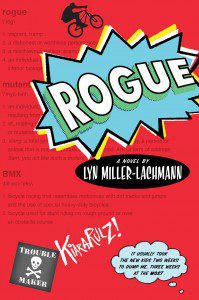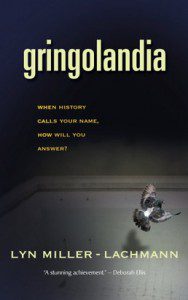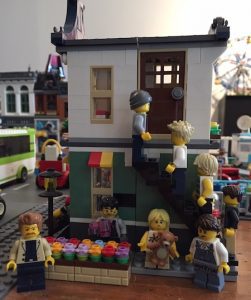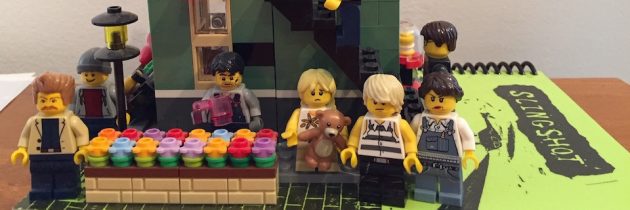Sympathy for the Devil: Villains
Two days from this posting, I’m supposed to co-lead a character development workshop for a community group of writers (remote, of course). We’ve planned for my co-leader, Kellye Crocker, to go first and talk about the protagonist — the hero of the story. I will follow and talk about the villain.
This well timed discussion of villains (see January 6, 2021 attempted coup in the halls of Congress) will revolve around making the villain a worthy antagonist so that the reader cheers for the protagonist but keeps reading the story because the villain actually has a chance to win. In fact, the antagonist isn’t always the villain, and many novels don’t have identifiable villains. An identifiable villain poses a danger to the story because they tend to be flat, stereotypical characters. When Kellye and I met with workshop organizer Kortney Price, one of the Raven Quill agents, we looked at photos of Disney villains. Many of them looked quite similar — thin, dark-haired, sour-faced, and female — so much so that I couldn’t readily distinguish Cruella DeVil, the Queen in Snow White, and Maleficent. In my workshop, I plan to discuss stereotyped images of villains following Kellye’s discussion of stereotyped images of heroes. I plan to ask the following questions:
Why does a story have a villain?
What makes a villain a villain?
Why is your villain a villain? What does the villain want? How does the villain plan to attain it? How does that connect with the desires and goals of the protagonist?
Does the villain think they’re a villain? Why or why not? How does the villain explain or justify their desires and goals?
I’m planning to offer examples from my own writing. As I go through my published and forthcoming novels, I realize, though, that most don’t have villains. That’s for several reasons.

Rogue is an example of a novel without a villain. Kiara is her own worst enemy.
One is that the protagonist can be her own worst enemy. That’s certainly the case for Kiara in Rogue, whose desire to make a friend leads to a series of bad choices, from slamming a tray in the face of a bully who she’d hoped to befriend to taking part in the neighbor boys’ shady family business. It’s also true for Surviving Santiago, where protagonist Tina — stuck in a place she doesn’t want to be on the other side of the world from her friends — is attracted to a dangerous love interest. Frankie, too, isn’t a villain but a kid born into the wrong family who wants a better life and has few options to attain it.
The second is that antagonist does not equal villain. The antagonist is merely the person or thing that prevents the protagonist from getting what they want. An antagonist can be a villain, but not always. For instance, Daniel’s father in Gringolandia is the antagonist but not the villain. Daniel wants a relationship with his human rights activist father, who he hasn’t seen in almost six years because his father was a political prisoner under the fascist Pinochet dictatorship in Chile. But his father wants to return to Chile to continue the struggle, while Daniel has already started the process of becoming a U.S. citizen. Daniel also worries that his father is so damaged from his time in prison that he may be incapable of a relationship. Still, he’s a hero, and Daniel knows and acknowledges that.

In Gringolandia, the antagonist is not a villain.
Finally, a villainous character may exist, but the story may not be entirely centered on that villain. In other words, there may be larger antagonists such as the protagonist or a larger outside force. There is a villain in my adult novel Dirt Cheap, the head of the suburban neighborhood association. However, in this ensemble-cast story, he’s only the antagonist/villain for one of the three characters, who turns out to be his own worst enemy as he faces an even greater threat to his life. These kinds of peripheral villains are common in middle grade novels, where bullies often add stress to protagonists facing bigger problems at home, in nature, or within themselves.
My one true villain is in my forthcoming YA historical novel TORCH, where Tomáš’s father, Comrade Kuchar, is the Communist Party leader of their town and region and the human embodiment of the totalitarian system that he serves. Often when the conflict is the protagonist vs. society, there is a villain who represents the social system. This is necessary because readers often need a specific person upon whom they can focus their ire as they identify with the protagonist. Although I have two other protagonists besides Tomáš, Comrade Kuchar plays a critical role in each of their lives as well as in the life of his son and in the life of his son’s best friend Pavol, whose sacrifice begins the story. That said, Comrade Kuchar is also an example of a villain who doesn’t see himself as a villain. He is building the foundation of the country that his son and his son’s generation will inherit. A former resistance fighter against the Nazi occupation, he supports the Soviet Union as their World War II liberators but unlike his former resistance comrade Ondrej (Lida’s father), he wasn’t on the ground fighting and didn’t witness those instances where the Soviet Union betrayed their local resisters. Furthermore, Comrade Kuchar is capable of great generosity, as when he helps Ondrej out, but he like most villains exacts a price for his help. Many of his self-justifications take the form of abusive gaslighting, common behaviors for both fictional and real villains. In the rare novels where villains are the main character, or at least a point of view character, they are usually unreliable narrators.

My character set for TORCH. The villain, Comrade Kuchar, is in the lower left corner. In contrast to stereotype, he’s not the shaggy dark-haired guy. That’s Ondrej.
In creating villains, writers to balance multidimensionality — making villains the “hero of their own story” and avoiding the stereotypical black-hat or mustache twirler — with building too much sympathy for the villain. One exception to this is the redemption arc, in which villains, through the efforts of protagonists or secondary characters, recognize their mistakes and change their ways. And there are plenty of examples of literary fiction where villains are the protagonists, and sympathy for their evil deeds is the point of the book. But at a time when real-life villains have caused massive death and destruction on a national and global level, seeing the vicious and cruel ones fall seems to be a far more satisfying way to go.







Excellent post, Lyn! I’m always amazed at authors who say of their antagonists, “I hate him/her.” Perhaps that is why some villains seem so shallow. I love the idea that a villain is the hero of his/her story. That person doesn’t think she is a villain.